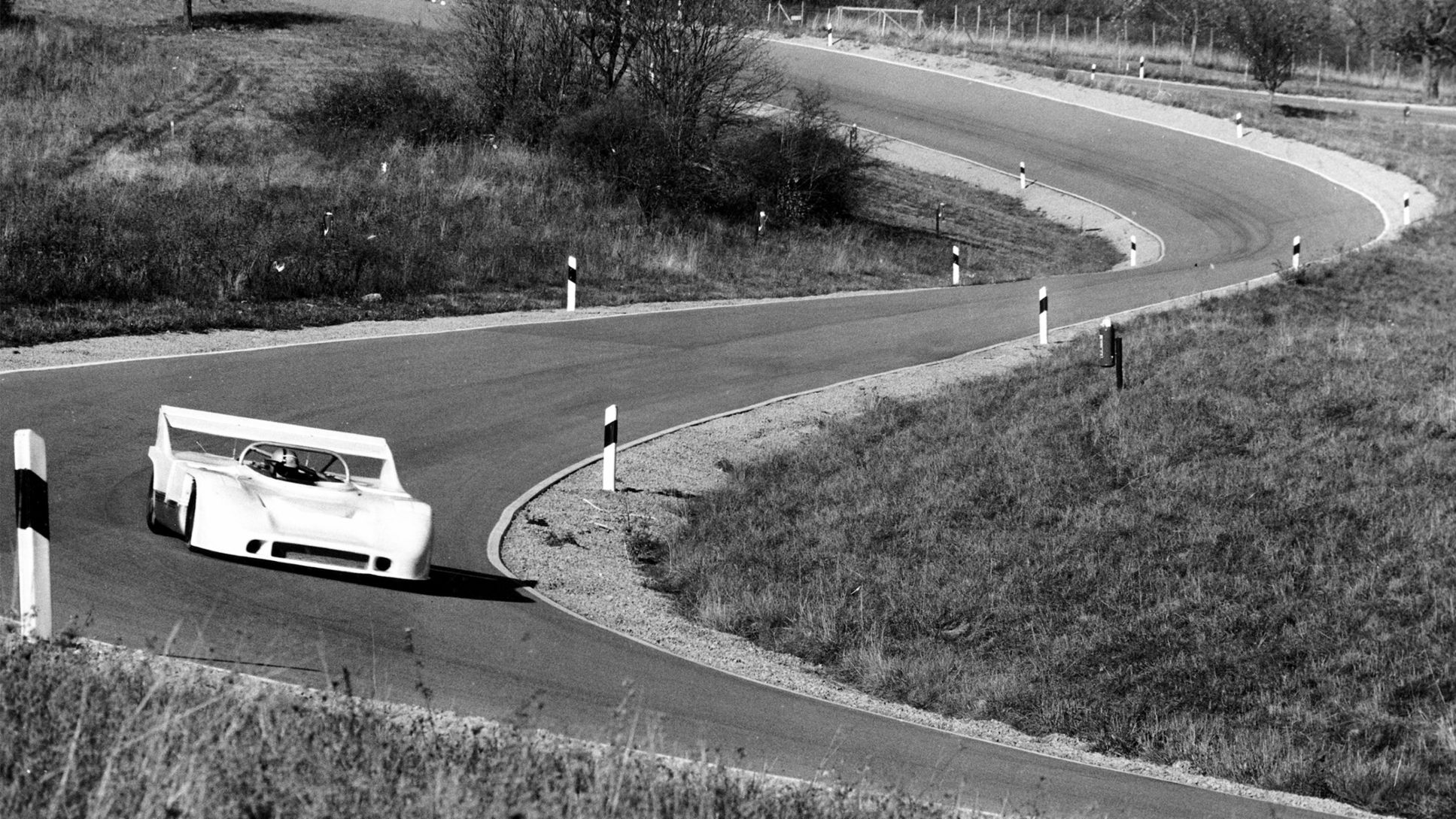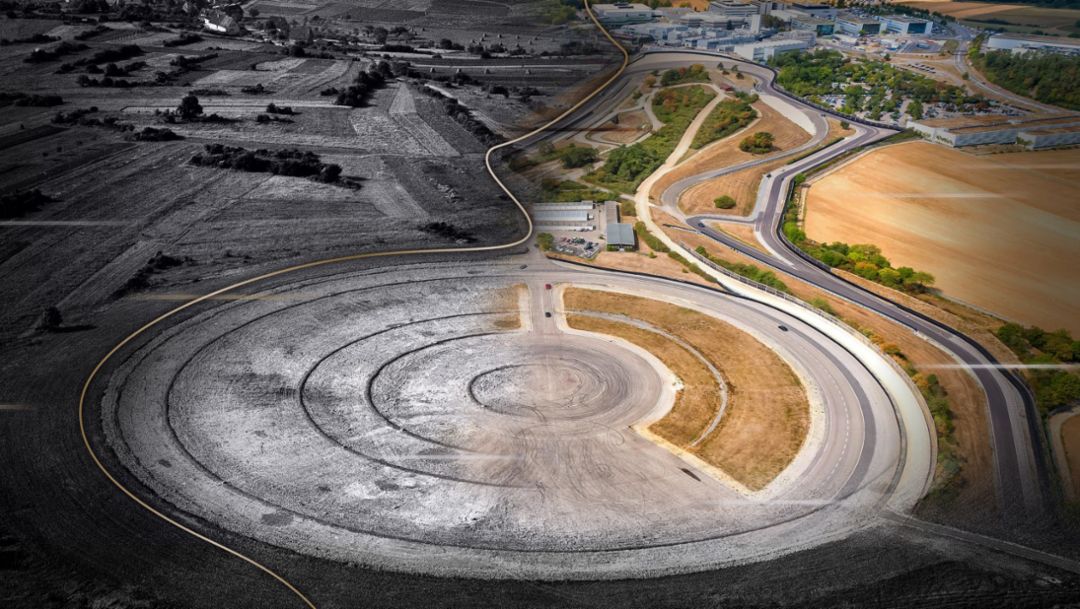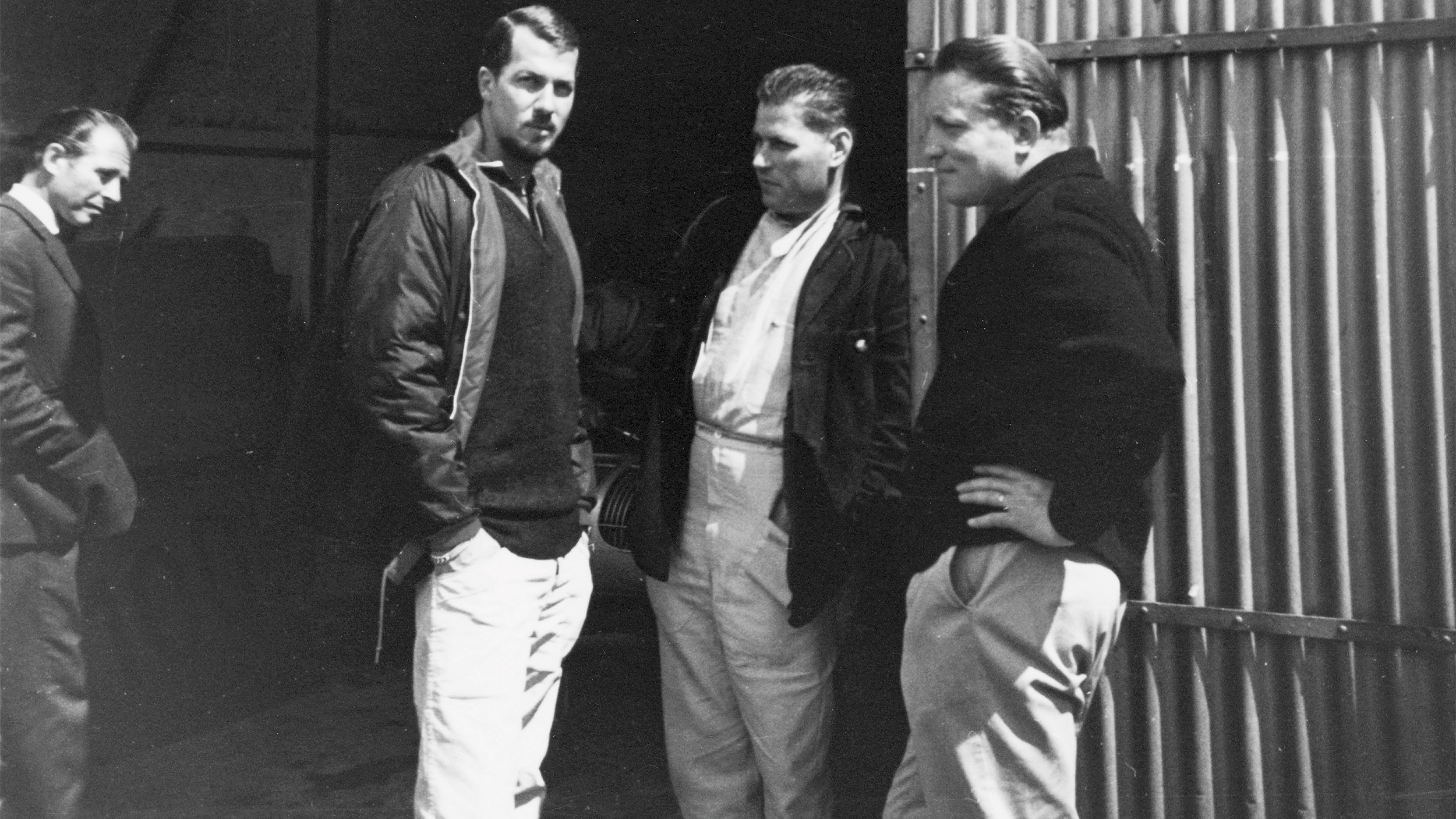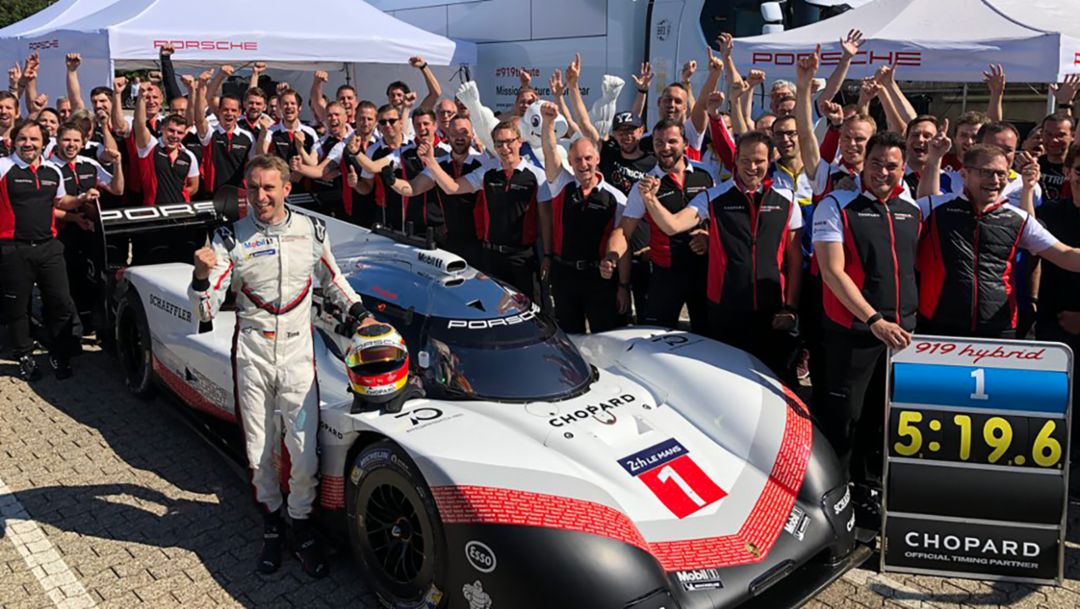The story of the track begins in 1959. Porsche had set out in search of a test site, since the motorway had become too narrow for test driving sports cars, much less racing cars. Malmsheim Airfield had been in use as a stopgap solution since 1954. The Volkswagen test track in Wolfsburg was a long distance away. Herbert Linge, a Porsche employee right from the beginning, as well as a respected racing and rally driver, suggested an area next to his home village of Weissach and the neighbouring village of Flacht, which a record from 1910 described as: "...remarkably mountainous and rocky, but not very fertile and very difficult to cultivate". Ferry Porsche liked the idea. In November, Porsche acquired most of the almost 38-hectare site. On 16 October 1961, Ferry Porsche came rolling along in the bulldozer to the groundbreaking ceremony.

A circular test track was built on the undeveloped site as the nucleus of the Development Centre. The skidpad offered three tracks with inner diameters of 40, 60 and 190 metres. As of 15 October 1962, it was here that test engineer Peter Falk, Linge and colleagues drove the early 901 right up to the grip limit and beyond. The focus was on basic chassis set-up, aerodynamics and endurance tests. One of the first racing cars on the circle, as Herbert Linge related in November 2019, was the Porsche 804 Formula 1. The skidpad hut was the first building to be constructed on the Porsche test site in order to house the testing staff's utensils.
And the first person to work for the sports car makers on the Weissach Heckengäu more or less permanently was Robert Schüle – albeit as a part-time freelancer, since Mr Schüle's main occupation was herding sheep and running the restaurant "Zum Hirsch". Schüle was on hand when tests were being set up and wound down, and he was more than just the hutkeeper.
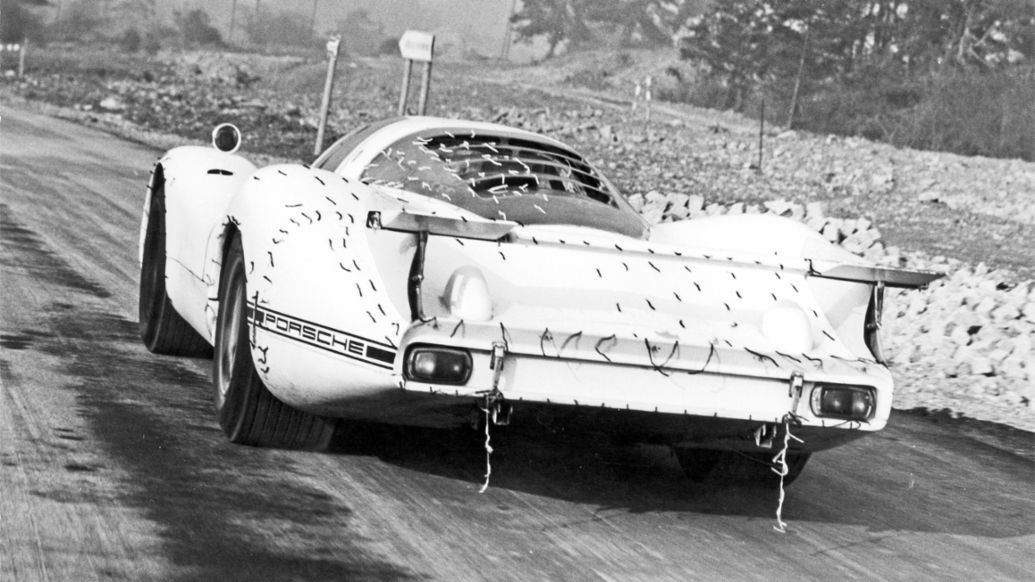
In 1969, the new 917 completed 258 laps of the circuit, stopping just once to refuel. Then the engineers knew that the wheel bearings held. The skidpad was also the ultimate judge when it came to determining the achievable lateral acceleration. Helmuth Bott – who joined Porsche in 1952 as an operations assistant, before rising to the position of head of testing and development, and then finally to head of development in 1978 – checked a list in his office of the record laps on the 190-metre circuit. The fastest driver on this list was Willi Kauhsen, who had held the record since 1972 with the 850 PS 917/10.
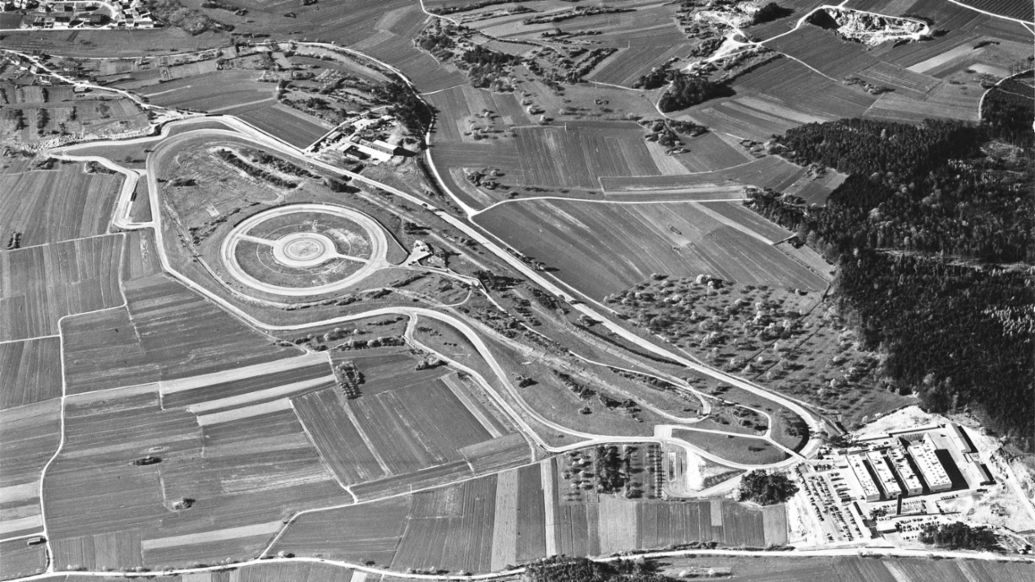
Porsche had competed in the World Sportscar Championship with the revolutionary 956 since 1982, and Bott wanted to know: was the car with the same weight, but with a power output 200 PS lower and narrower tyres faster than the mighty 917 thanks to its aerodynamics? Project manager Norbert Singer had worked this out for his boss. As Porsche's fastest driver, Stefan Bellof was faster – but not as fast as Singer had promised Bott. Bott knew that racing drivers lacked determination when making these kinds of attempts. Thus he summoned Peter Falk to the cockpit.
"The construction vehicles were still there when we first set out on the new track. You would call that off-road nowadays." Herbert Linge
Falk ranked as the skidpad champion, holding the record with the 908 and 917. On 30 April 1984, he fastened himself into the 956, set off... and the stopwatches registered a record time of 14.4 seconds. This equated, as Falk calculated in 2019, to an average speed of 150.576 km/h and a lateral acceleration of 1.858 g with a circle diameter, on which the centre of gravity of the 956 drove, of 192 metres (only thoroughbred engineers give answers like this). The record still stands today, and will likely never be beaten. As Norbert Singer explains: modern racing tyres enable higher lateral accelerations for a few seconds, but would probably not withstand 14 seconds at that limit.
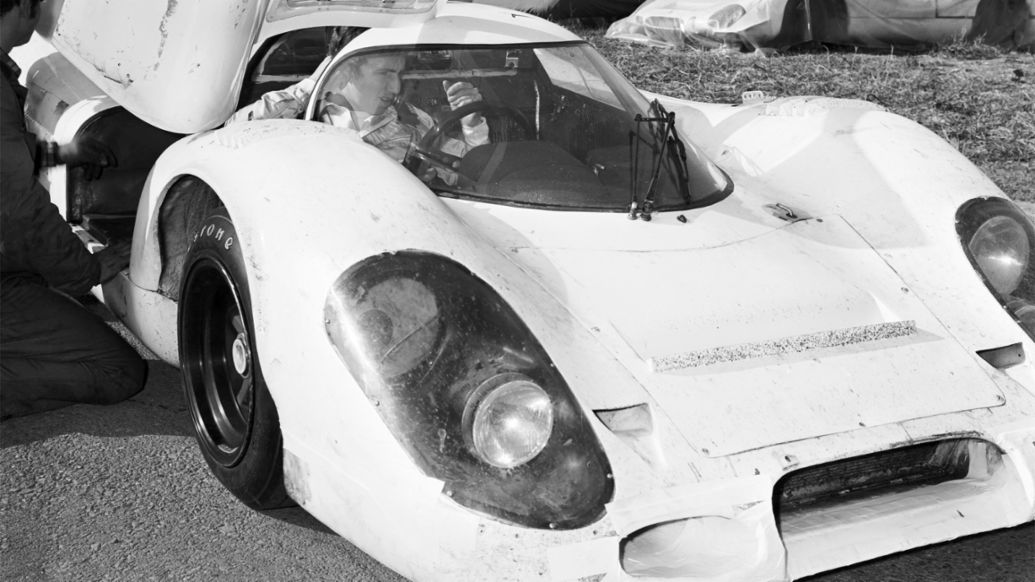
Helmuth Bott had formulated the comprehensive "Weissach Project" back in January 1960, and remained passionately committed to the site until his retirement in 1988. In 1966, Bott commissioned the engineer Jochen Freund to lay a test track on the site. Bott had a considerable say with regard to the layout. Thus, their combined expertise resulted in the 2.88 km long mountain circuit. Herbert Linge: "The construction vehicles were still there when we first set out on the new track. You would call that off-road nowadays." The mountain circuit is driven around in a clockwise direction. Peter Falk describes a lap: "The north bend is a fast right turn. The car had to be moved over immediately at a similarly high speed for the following left kink when coming out of the bend on a downhill section. This fast left turn soon came to be known as the 'master turn'. It led into a short straight, which then joined onto a right bend, the 'old courtyard', leading to the exit.
After a short straight of around 170 metres came the 'Z slope'. You arrived at this steep uphill right-left combination at a high speed. Early ABS systems tended to fail here; the abrupt change of direction and simultaneous braking were too much for the simple sensors. From the 'Z slope', the track continued to climb through the fastest turn, the 'path'. Then came the 'Bott chicane'. This is a very fast, blind right turn which slopes outwards over a crest. A number of inexperienced drivers lost the car there, and even for pros it was a critical point. We made the case for simplifying the turn, but Helmuth Bott stuck to his guns. The 'Bott chicane' has remained to this day. Next there was a 90-degree left kink, then the 'David's tree', a sharp right turn. From here, after a short straight and two fast left turns, the track led to the 'Flacht peak', a hairpin turn, and from there along a short straight and a left-right combination to the 'south bend'. This was a fast right turn that led to the approximately 700-metre-long straight to the 'north bend'.
Between 'David's tree' and the 'south bend', the 'rough road', which had a bumpy surface, potholes, a saltwater passage and other demanding conditions, ran parallel to the smooth, even track. After around half the length of the long straight, the second endurance test for our series production and racing cars, with holes, bumps and even a jump ledge, again ran parallel to the normal track."
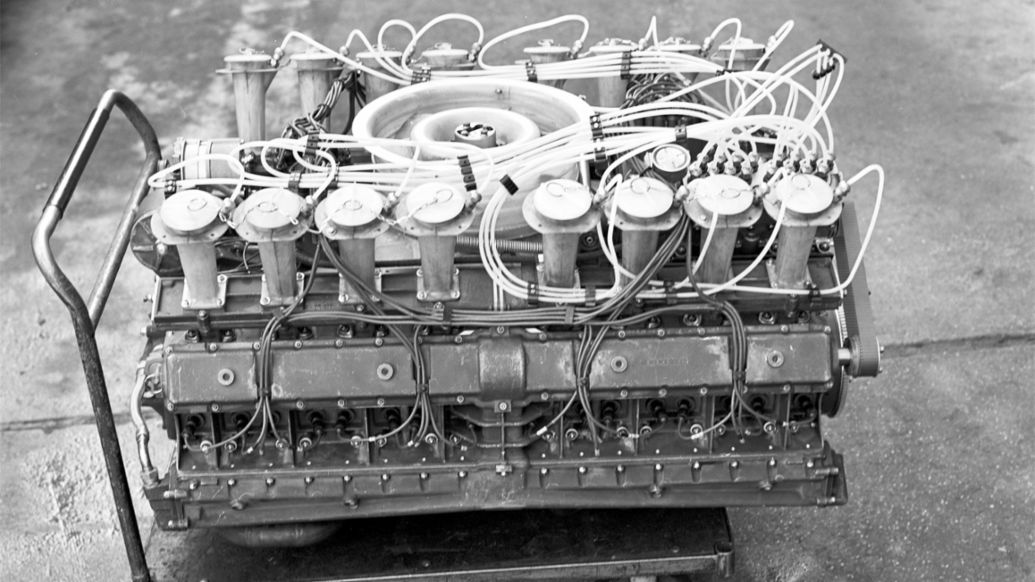
The "master turn" owes its name to Herbert Linge: "Shortly after the circuit was completed, I took a violent spin off the track in a 356 GT. It's possible that the car had overbraked a bit at the rear. I was not the only one to fly off the mountain circuit. Many others did so after me. At the beginning, we would put a sign up at that spot with the name of the driver. But our boss didn't like that."
The racing cars had to withstand thousands of kilometres and more, including the "rough roads" (without the salt bath), before they were launched onto competitive racetracks. An ordeal for drivers and cars, which proved to be absolutely essential. The possibility of a victory at 12 hours of Sebring in 1969 was lost after first rain and then snow fell in Weissach. The new 908/02 Spyder could not be driven on the vibration test track, and the lightweight frames broke on the concrete slabs of the racetrack in Florida. Even the legendary 917 wasn't spared the gruelling test before its debut in Le Mans in 1969.
A lap at IndyCar in 1:13.28 minutes
In his excellent book, the engineer Walter Näher records 732 laps or 2,080 kilometres on the vibration test track. So much for "endurance". As for speed, it was not a speedster of the 908/03 variety on the angular track, but an open-wheel car that wrote the crucial chapter. On 9 November 1988, Roland Kussmaul drove a lap at IndyCar with a Porsche engine and March chassis in 1:13.28 minutes. Kussmaul explains: "There were two versions of the Indycar: one for ovals and one for the tight corners of the urban circuits, where we needed high mechanical grip. We tested these on the mountain circuit." Norbert Singer later commented on one characteristic of the mountain circuit in particular: "Those hairpin turns! They were worse than a car park!"
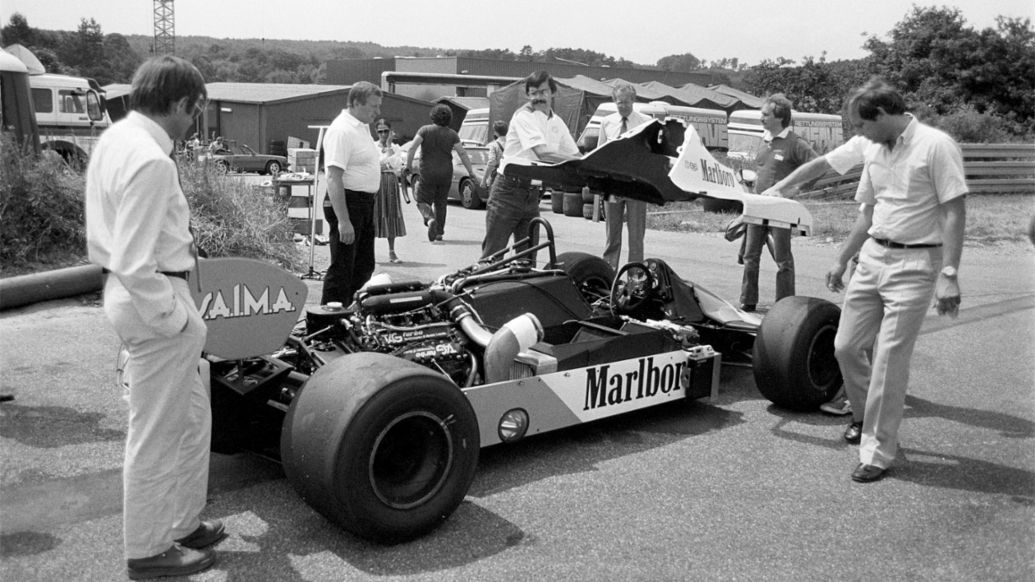
In order to be able to drive cars like the 917, which initially had a power output of 580 PS, at high speeds and a good rhythm, the racing department needed a faster track from the end of the 1960s, which Peter Falk designed on behalf of Helmuth Bott. The 2.531-kilometre-long "Can-Am circuit" was ready to use from 1971. Within the old track, a super fast right-left section now lay between the "master curve" and the "Z slope". At the point where the old "Z slope" joined the new ultra fast left bend, the track led over a crest where the car dangerously lifted off. Even for Head of Development Ferdinand Piëch, this spot seemed too risky.
Peter Falk recalls: "Regarding this awkward section, Piëch asked me: 'What on earth did you get up to out there?' He had the crest partially removed." But only partially, and so the best way to navigate the "Piëch chicane" at high speed is still with a good deal of courage and a clenched behind. The winding section from "David's tree" over the "Flacht peak" to the straight was shortened by the "Can-Am" right bend.
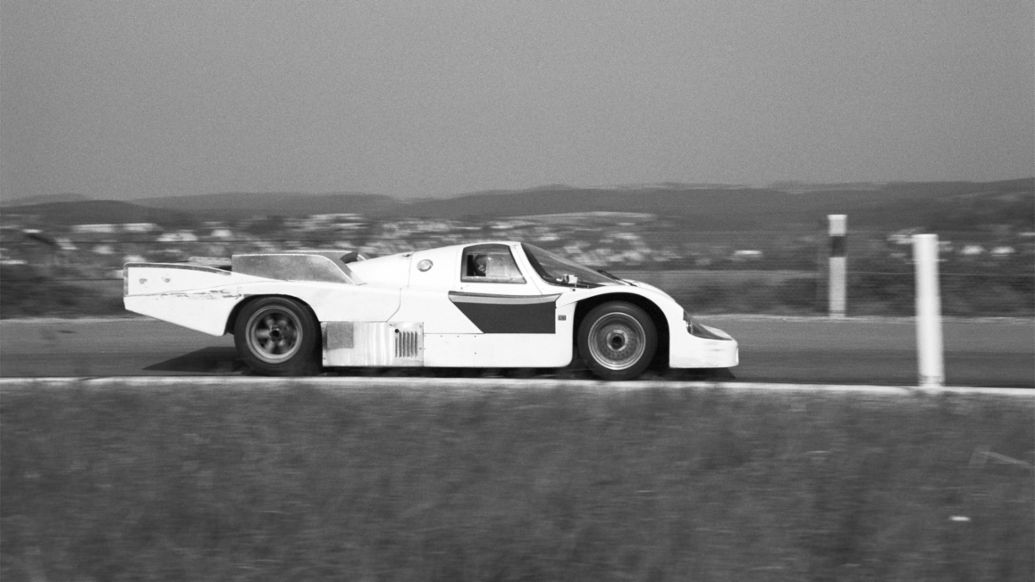
Every modern racing car from Porsche has driven its first kilometres on the Can-Am circuit. It is where new eras in motorsport have been ushered in with what is known in racing as the "rollout". This is the launch of the racing car – the big moment following many day and night shifts. On 30 July 1971, the first Porsche racing car with a turbocharger took its first laps. Behind the wheel of the 917/10 Spyder, with a 4.5-litre engine and a power output of almost 850 PS, was Jo Siffert. The turbo era at Porsche had begun. On 2 September, the era of the naturally aspirated engine in Porsche elite sport drew to a close. By way of experiment, Porsche had built a 6.5-litre 16-cylinder engine with a power output of 755 PS for the 917/10 Spyder, which was very long and, at 320 kg, one tenth heavier than the early turbo. With tireless effort, Willi Kauhsen achieved a record lap of 51.5 seconds with this engine. Then the behemoth was driven into the museum.
The American Mark Donohue is entered on one of Norbert Singer's record lists from that time as the fastest ever driver of the 917/10 Spyder: 47.2 seconds, achieved in November 1972. A defining moment came on 27 March 1982, when the revolutionary ground effect prototype 956 took its first laps after just nine months of development. The 956 had survived its 1,000 kilometres on the vibration test track in April 1981. In March 1983, Jacky Ickx became the fastest man ever to drive the 956, setting a record time of 45.7 seconds. By 1987, the 956 and its successor, the 962C, had achieved six victories in Le Mans and four in the World Championship for Makes, among others.
On 6 May 1983, Porsche's Weissach employees and the farmers on the surrounding fields listened carefully: what they heard was a 956, but it sounded very different from the usual turbo boxer. And indeed it was: the car being driven around the Can-Am circuit by Roland Kussmaul was fitted with a brand new turbo engine. It was the TAG Turbo made by Porsche: a compact V6 with 1.5-litre displacement, two turbochargers and an initial power output of 720 PS, which subsequently rose to up to 1,040 PS for chasing times during qualifying practice prior to Formula 1 races. On 29 June, Irish racing driver John Watson started the engine for the rollout in the McLaren MP4 Formula 1 on the Can-Am circuit. Niki Lauda improved the track record in the McLaren-Porsche to 44.6 seconds in February 1984. By the scheduled end of the collaboration between McLaren and Porsche in 1987, the German engine inside the British chassis had won three World Championships for drivers and two for constructors.
Stuck almost reached Lauda's Formula 1 record
In June 1986, Hans-Joachim Stuck came within three tenths of a second of Lauda's Formula 1 record in a Porsche 956 fitted with qualifying tyres – an astonishing feat that can be accounted for by Stuck's driving skill, the very special set of Dunlops, and the legendary aerodynamics of the Porsche. Porsche began developing and building a 3.5-litre V12 for the British Arrows Formula 1 team in 1989. The German racing driver Bernd Schneider and Italian Michele Alboreto drove the lightweight 505 kg car with 700 PS output power on the Weissach asphalt, and that was the end of Lauda's record. In October 1990, Alboreto lapped the Weissach asphalt circuit in a tremendous 41.8 seconds.
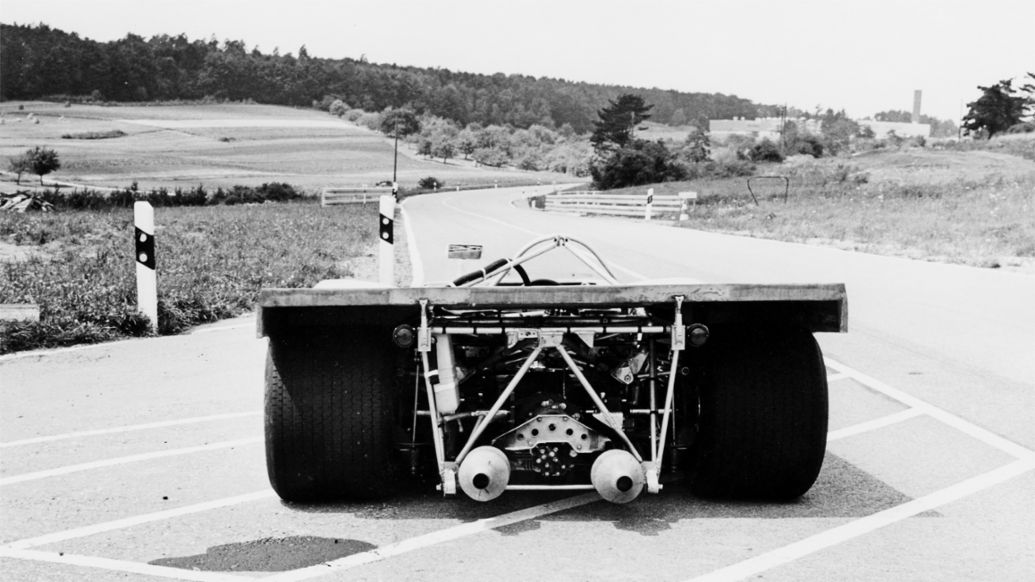
This is the final record on Norbert Singer's list of best times. A new surface initially provided reduced grip, and the times were barely comparable to the earlier ones. Moreover, Porsche moved away from Formula 1 in order to focus entirely on racing cars and prototypes. Of course, the chain of successes did not end there. On 14 March 1996, the 911 GT1 96 took its first laps on the Can-Am circuit as the first mid-engined 911. Two years later, on 23 February 1998, the motorsport professionals celebrated the rollout of the first Porsche racing car with a carbon fibre monocoque: the 911 GT1 98 (a Le Mans champion).
The next big launch followed on 2 November 1999: Porsche's Spyder LMP2000, with a newly developed 5.5-litre, 10-cylinder naturally aspirated engine and groundbreaking aerodynamics – which still features in prototypes to this day – took its first laps in the rain and cold. Ultimately, these were also to be its last, as Porsche withdrew from elite racing for many years. Financial and human resources were tied up in the new Cayenne. However, the time and effort invested did not go completely to waste, since the 10-cylinder engine would in future make its way into the magnificent Carrera GT (which, of course, also found its feet in Weissach).
Porsche 919 Hybrid Evo takes record
Alboreto's record now seemed to be set in stone. Then 2013 heralded an exciting new era: Porsche's return to top motorsport. On 12 June, works driver Timo Bernhard drove the first laps of the prototype 919 Hybrid. Porsche went on to win the World Endurance Championship and Le Mans in 2015, 2016 and 2017. Then the time came to bid farewell to the champion racer – and in true motorsport fashion. For a farewell tour of the most famous racetracks, the Weissach team, led by race director Fritz Enzinger, built the 919 Hybrid Evo free from regulatory constraints: with a two-litre turbo engine on the rear axle and an electric motor on the front axle generating a total power output of 1,160 PS, a weight of 849 kg, and 50 per cent more downforce than the World Championship car. At the beginning of 2018, the stopwatches registered 40.625 seconds for Timo Bernhard in the Evo. As for Weissach records, for now it looks like he has the last word.
Info
Text first published in the magazine „Porsche Klassik 17“.
Author: Wilfried Müller
Photographer: Porsche AG Historical Archive, McKlein Photography
Copyright: The image and sound published here is copyright by Dr. Ing. h.c. F. Porsche AG, Germany or other individuals. It is not to be reproduced wholly or in part without prior written permission of Dr. Ing. h.c. F. Porsche AG. Please contact newsroom@porsche.com for further information.
